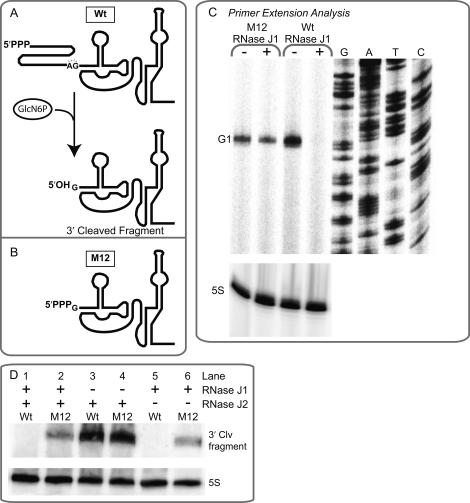Figure 5.
Molecular identity at the 5′ terminus of self-cleaved transcripts is important for RNase J1-mediated degradation. (A) A schematic highlighting molecular identity at the 5′ terminus upon ribozyme self-cleavage. Wild-type sequences contain a hydroxyl group at the 5′ terminus after self-cleavage. (B) In contrast, the M12 mutant was created such that transcription initiated at G + 1 (the site of self-cleavage) and therefore contained a triphosphate group at the 5′ terminus (see Materials and Methods for further description). (C) Primer extension analyses of total RNA samples during conditions of replete or depleted RNase J1 revealed that M12 transcripts accumulated regardless of RNase J1 status, whereas wild-type, hydroxyl-terminated transcripts were degraded in an RNase J1-dependent manner. For these experiments, cells were cultured as described in Figure 4 and in Materials and Methods. (D) Depletion of RNase J1 but not RNase J2 led to accumulation of wild-type transcripts. Similarly, M12 transcripts accumulated regardless of the presence or absence of RNase J1 and RNase J2.

